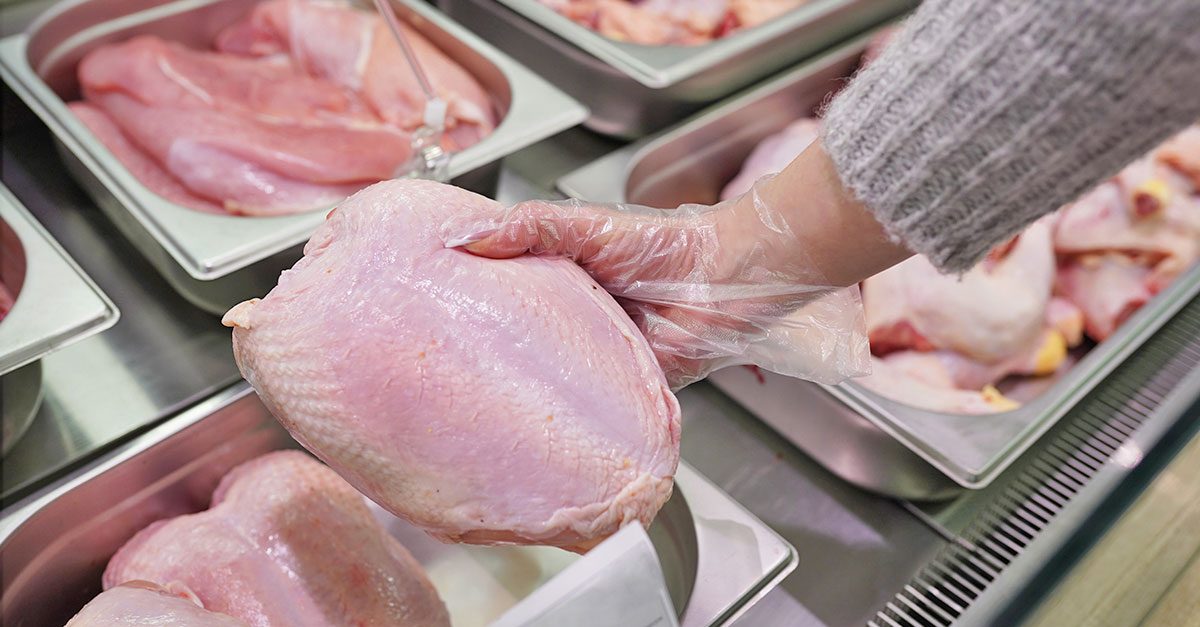What Are Those White Stripes On My Chicken Breast?
White stripes on chickens, or white striping, is a phenomenon that has long been studied by nutritionists and veterinarians: let's see, according to experts, what they are and what the consequences of this myopathy are.

The distortions of the food industry, with the enormous growth of chickens, force us to ask ourselves questions. One of these is the phenomenon of white stripes that are often found on chickens, particularly on the chest: many wonder what they are and whether they are harmful to health. This is, in fact, a consequence of the practices implemented in intensive farming, in particular those of broiled chickens. Do we need to be wary of them? Here's everything you need to know about the white stripes of chickens, a phenomenon better known as "white striping".
White Stripes on Chickens: What They Are and Are They Edible?
According to Animal Equality, chickens are the most exploited land animals on the planet. The phenomenon of intensive farming has created real distortions, such as that of broiler chickens, whose growth is "forced" in a completely unnatural way, causing various consequences: one of these is the phenomenon of white striping, or the formation of white streaks on the meat, effectively streaks of fat.
The defect in technical terms is called "white striping" and already in 2013 it was considered one of the emerging anomalies in poultry meat. Those white stripes are basically accumulations of fat.
But what happens to a chicken breast that has this defect? Let's start by saying that this anomaly is observed more frequently in heavy, male subjects, selected for their rapid growth and maximum performance in pectoral muscles. From a pathogenic point of view, research is now fairly consistent in believing that rapid growth of the pectoral muscle is associated with intense metabolic stress which promotes the appearance of degenerative characteristics. In essence, under the genetic ‘drive' of rapid growth, muscle fibers undergo degeneration and regeneration processes which lead to a modification of the size of the muscle fiber.
With this system, the spaces left empty by the atrophic fibers are filled with fats and fibrous tissue: and here are the white stripes. The breasts with this anomaly are edible but, also depending on the severity of the defect, they can be downgraded with losses quite serious for the producer, considering that the chicken breast is one of the most valuable cuts of the carcass.
Meat with white stripes is therefore not directly harmful: it is edible like all other types of meat. What we ask ourselves, and which has not yet been fully demonstrated, is the question of the loss of nutritional balance: an increase in fact could lead to a reduction in proteins, vitamins and other nutrients. Even the taste could be affected, with meat having lower organoleptic value, but even in this case there is currently no scientifically demonstrable evidence.

Other Myopathies in Chickens: Woody Lump and Spaghetti Muscle
The term "myopathy" refers to pathologies that cause damage to voluntary muscles, also called striated muscles. White stripe myopathy is not the only myopathy linked to the ultra-rapid growth of chickens. According to studied conducted by Professor Shai Barbut of the Food Science Department of the University of Guelph, Ontatio (Canada), there are thee main phenomena found massively in chickens:
white striping with parallel stripes on the surface of the pectoral muscle;
woody breast with accumulation of connective tissue and lipid cells inside the pectoral;
spaghetti muscle (spaghetti meat) that separates the muscle bands.

These myopathies appear associated with rapid growth and heavier subjects: these are phenomena related to the speed of growth at a specific age and not just to absolute weight. Woody breast would be the consequence of a metabolic disorder characterized by an abnormal accumulation of fat in the muscle tissue of the breast: although not harmful to humans, it makes the meat tough and unpleasant to consume; the spaghetti muscle, often confused with the white stripes, which causes a "stringy" consistency is also in this case a phenomenon due to super rapid growth, which does not allow the chicken's body to produce enough oxygen and nutrients to supply the chicken muscle fiber, which degrades and becomes fibrous.
The commercial consequences of these phenomena should not be underestimated: these chickens often become unsellable, precisely due to the excess of defects that the meat presents. But in all other cases, i.e. when these defects are not excessive, they are placed on the market: the consequences on taste and nutrition, however, are not yet fully clarified.
;Resize,width=767;)
;Resize,width=712;)
;Resize,width=712;)
;Resize,width=712;)
